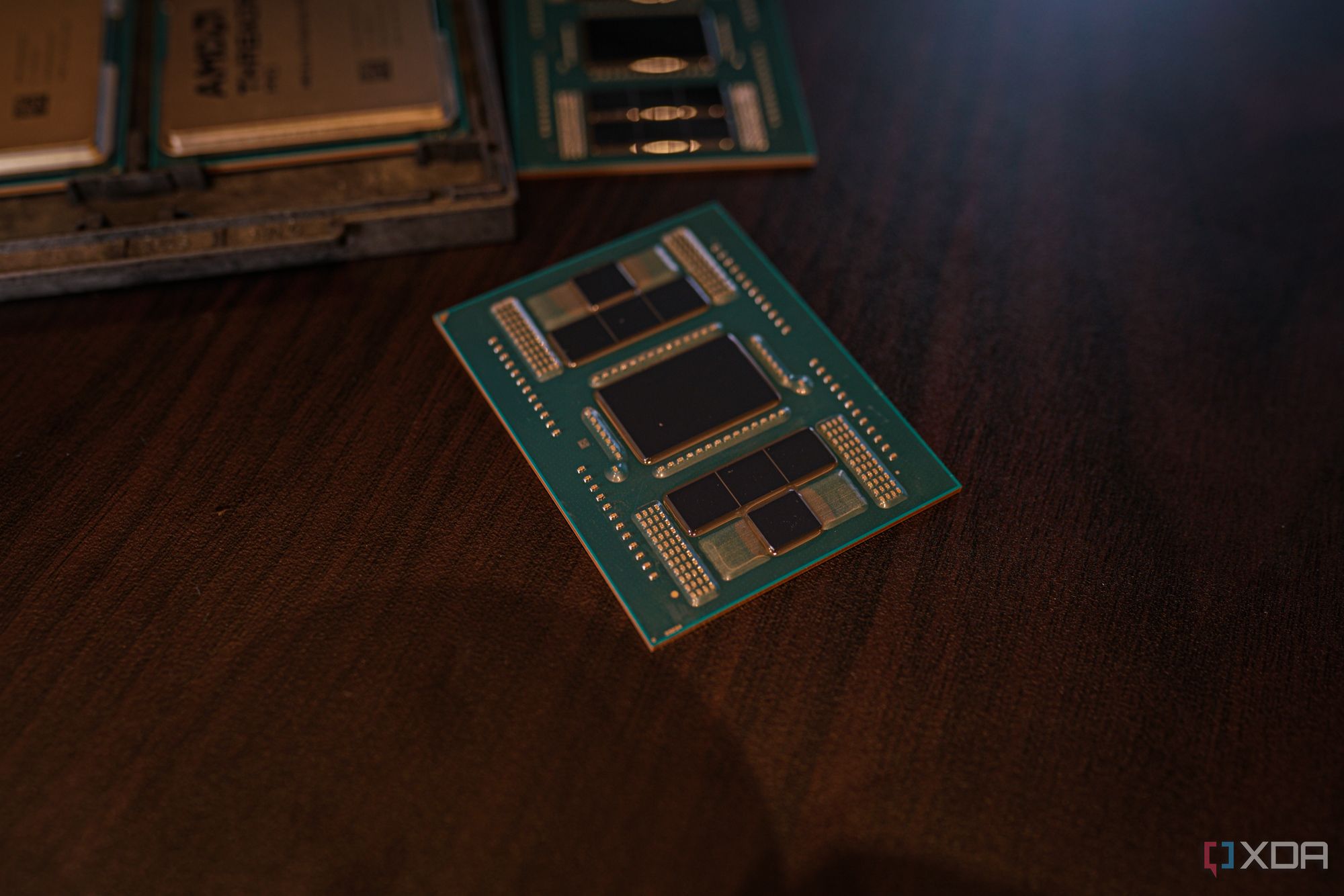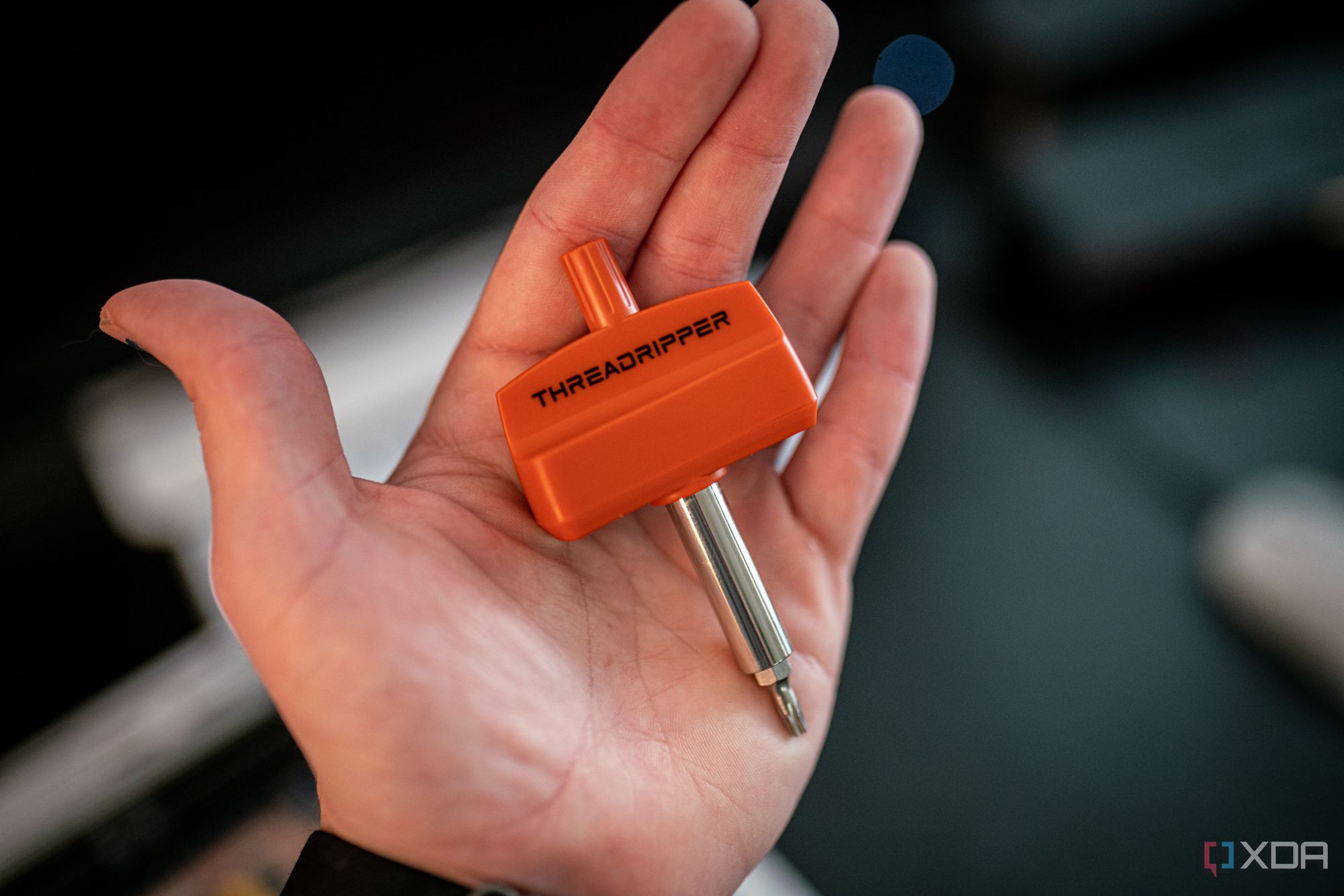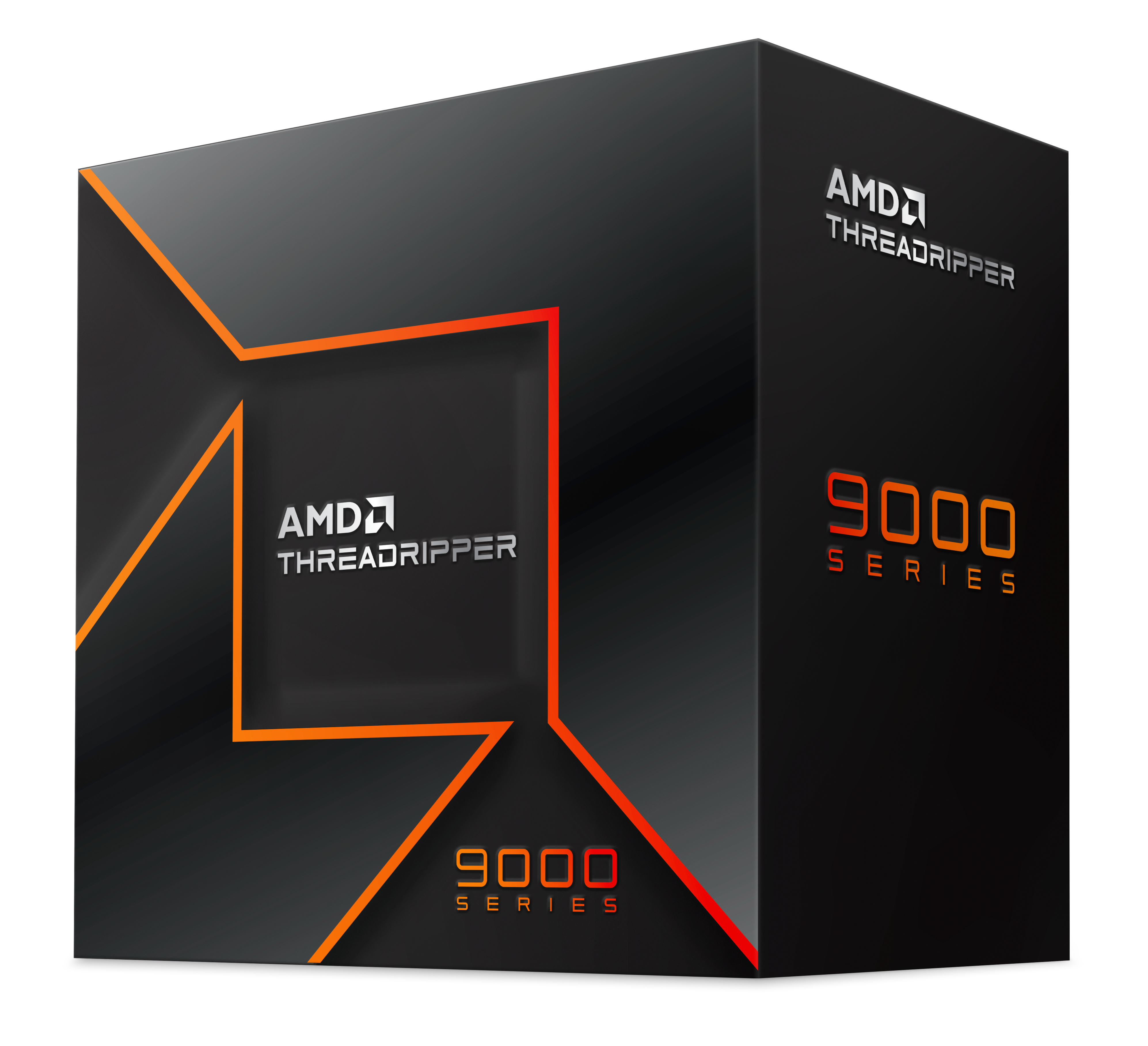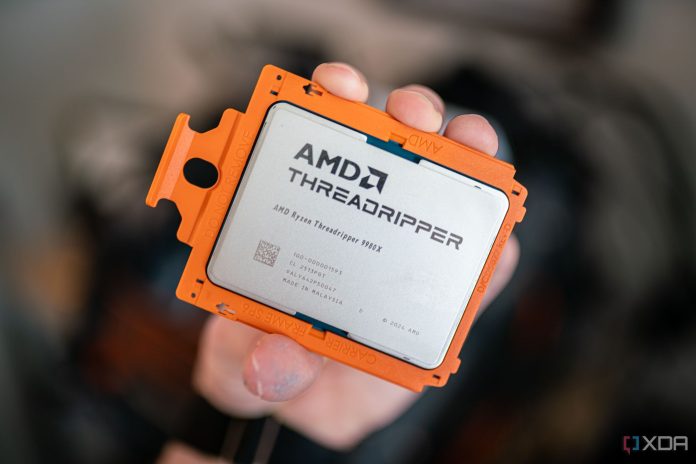There’s no question about it. AMD’s new Threadripper 9980X is insanely fast. It’s so fast that I’m comfortable saying, outside the data center, you’re not going to find a faster chip. That’s due not only to the excellent Zen 5 architecture, which we’ve seen at play with chips like the Ryzen 9 9950X3D, but also its massive array of 64 cores and 128 threads. You’d assume that it would be a monster at just about any task you can throw at it, but that’s not the case. Despite being $5,000, packing 64 cores, and making even flagships like the Core Ultra 9 285K look like embedded chips, the Threadripper 9980X is a pretty bad gaming CPU.
It’s not built for gaming, and if you know a bit about how AMD designs chips, you likely know the reason why the 9980X falls behind in games. For everyone else, let’s go on a little journey of gaming performance, chiplets, and the all-important metric of latency.
A Threadripper isn’t made for gaming
And that’s due to more than price
Threadrippers aren’t built for gaming, so there isn’t a reason to be critical of a product when using it for a purpose it wasn’t made for. This exploration is meant to be educational more than anything. Below, you can see a handful of benchmarks I ran on the Threadripper 9980X stacked up against everyone’s favorite gaming CPU — AMD’s own Ryzen 7 9800X3D. Not only is it the fastest gaming CPU you can buy, it’s also less than one-tenth of the price of the 9980X, clocking in at just $450.
The Ryzen 7 9800X3D has eight cores to the 9980X’s 64, but these two chips are very similar otherwise. They’re both packing the Zen 5 architecture, and more importantly, they both have massive pools of cache. The Threadripper 9980X doesn’t use 3D V-Cache, but the raw size of the chip doesn’t really necessitate the use of that technology. Both chips come with 1MB of L2 cache per core, as well as a large shared pool of L3 cache; 96MB on the Ryzen 7 9800X3D and 256MB on the Threadripper 9980X.
|
Threadripper 9980X |
Ryzen 7 9800X3D |
|
|---|---|---|
|
Ashes of the Singularity |
58.2 fps |
65 fps |
|
Black Myth: Wukong |
117 fps |
125 fps |
|
Cyberpunk 2077 |
148.4 fps |
232.3 fps |
|
F1 2022 |
330 fps |
448 fps |
|
Final Fantasy 14 Dawntrail |
207.2 fps |
286.1 fps |
Regardless, the results at 1080p speak for themselves. Not only does the Ryzen 7 9800X3D beat the Threadripper 9980X in games while costing less than one-tenth the price, it does so by margins that you don’t normally see for CPUs. These aren’t even margins you typically see in a GPU review, where it’s much easier to see the differences in hardware. That’s what makes looking at gaming performance with a 64-core Threadripper like this interesting.
It’s easy to guess that games won’t scale up to meet the capabilities of a massive workstation-class CPU; not many people are running them, and a lot of games struggle to even leverage the thread count available on consumer desktop CPUs. What’s interesting about Threadripper’s gaming performance is that it’s actively and significantly worse than even a run-of-the-mill gaming CPU, much less the fastest gaming CPU on the market. And there’s a good reason for that.
Latency, CCDs, and the importance of workload
Square peg, round hole

Above, you can see an image of the Threadripper 9980X with the Integrated Heat Spreader (IHS) removed. Instead of a block of cores, the 9980X uses a series of Core Complex Dies, otherwise known as CCDs or CCXs. Those CCDs are the small squares dotted around the edges of the chip, and each of them holds eight Zen 5 cores. Take eight times eight, and you end up with 64 cores. In the middle is a large I/O die, which is the conductor that makes these disparate patches of silicon operate in harmony.

Now, look at a render of the Ryzen 7 9800X3D with the IHS removed. We have a CCD for the eight Zen 5 cores, as well as an I/O die, but that’s it. When you’re playing a game, all the processing is happening on that one CCD. Maybe you can see the problem. When the 9980X taps more than one CCD, the processing is distributed across a (relatively) large distance. That creates so-called inter-CCD latency, or the latency between multiple chiplets. It’s the same reason you see slight regressions in gaming performance on a chip like the Ryzen 9 9950X3D compared to the (weaker on paper) Ryzen 7 9800X3D.
With a massive Threadripper, that problem is just amplified, and it’s an issue that’s particularly present in games as a workload. Although there have been strides to parallelize game engines over the past several years — Cyberpunk 2077 is a good example — the vast majority of games can’t leverage beyond eight cores and 16 threads. Games are less concerned with a massive array of cores working in unison and more concerned with a tightly-coupled group of threads executing instructions with the smallest latency possible.
It’s one of the clearest examples of the sentiment: your workload makes all the difference. Threadripper is all about more being better, and in a lot of applications, that holds up. But it’s not a universal truth. In order to accommodate workloads that can really take advantage of all 64 cores, the 9980X makes plenty of trade-offs along the way.
It’s the difference between good and great

Don’t mistake this look at the gaming performance on Threadripper as me dogging the CPU. It’s awesome, and in a ton of applications, it’s hard to wrap your head around how fast it really is. I’m not even trying to convince you to buy a different CPU. I don’t think there are a ton of people in the market for Threadripper in general, let alone those who primarily play games on their PC. However, looking at gaming performance on Threadripper does an excellent job illustrating the problems with pairing the wrong hardware with the wrong job.
There’s the issue with inter-CCD latency, sure, but there’s also the issue of software support for this kind of workload. AMD makes users with dual-CCD X3D chips like the Ryzen 9 9950X3D jump through hoops to get the best performance, and that’s just to coordinate two CCDs for the best performance. Could you imagine what you’d have to go through if AMD wanted to bill a chip like the 9980X as a gaming processor? I’m sure with enough drivers and workarounds the 9980X could have better gaming performance, but is the juice worth the squeeze? I reckon not.
Testing a huge Threadripper in games is an extreme example, but I think there are some more practical takeaways here. For instance, buying a high-end GPU like the RTX 5080 when you have a 1080p monitor is not only a waste of money, it can actually lead to worse performance than a weaker GPU. Similarly, you might want to spend up for the fastest kit of DDR5 you can buy, but if you aren’t careful, you can end up with memory that has more overall latency than a kit that’s “slower” on paper.

AMD Threadripper 9980X
- Socket
- sTR5
- Cores
- 64
- Threads
- 128
- Base Clock Speed
- 3.2 GHz
- Boost Clock Speed
- Up to 5.4 GHz
- PCIe
- 88 lanes PCIe 5.0
In the world of PC hardware, more is better; except for when it isn’t. Especially today, as architectural flourishes like 3D V-Cache define performance advantages, it’s more important than ever to pair the right hardware with the right workload.
